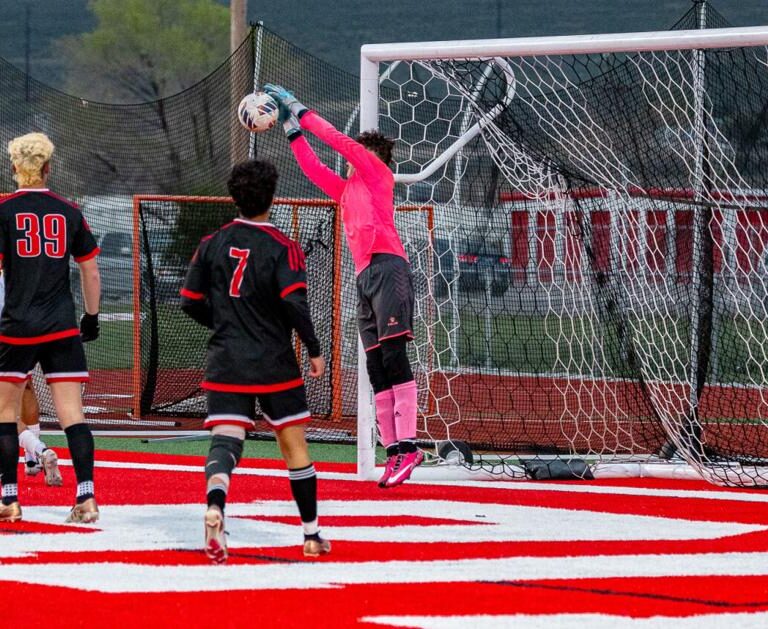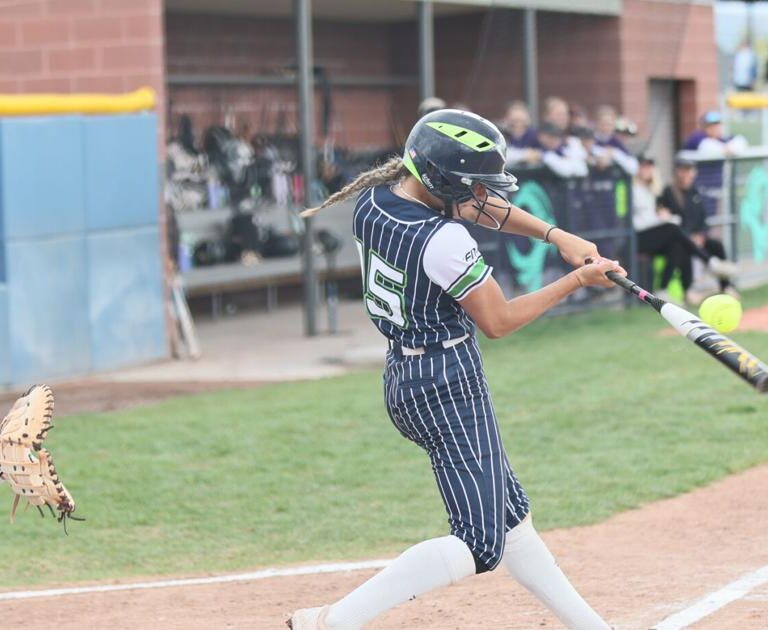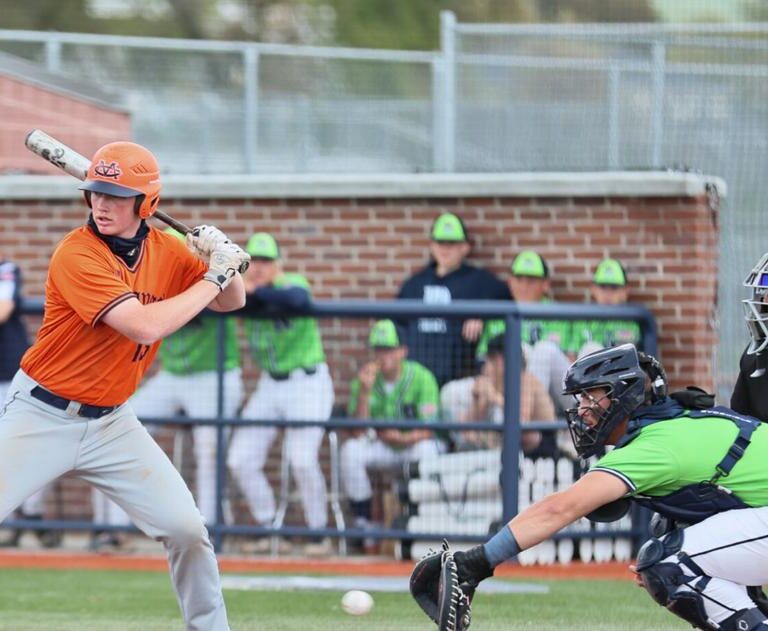Georgia State quarterback Darren Grainger, center front, reacts after his team turned the ball over on downs with an incomplete pass on fourth down against LSU during the first half of an NCAA college football game in Baton Rouge, La., Saturday, Nov. 18, 2023. (AP Photo/Matthew Hinton)
In just under two weeks, Utah State will face off against Georgia State for the first time in program history. Here’s a longform breakdown of Georgia State’s history and how this season has gone for the Panthers.
Georgia State’s football program is very young, dating back only to 2010. The Panthers began exploring the feasibility of a football program in the mid-2000s, officially announcing their intentions to field a Division I football team on April 17, 2008. Two years later in 2010, Georgia State played its inaugural season at the FCS level and in 2013 made the move to FBS, joining the Sun Belt Conference.
The early goings of Georgia State’s history were, to put it mildly, rough. The first FBS season for the Panthers resulted in an 0-12 season followed up by an only slightly better 1-11 campaign in 2014. It wasn’t until 2015, the program’s third year at the FBS level, that the team got a win against an FBS team (the lone win of 2014 was to FCS Abeline Christian).
But since 2017 the program has largely been a decent Sun Belt team with five bowl appearances in the last seven seasons. The Panther’s best year to date is their 8-5 season in 2021, capped off by a 51-20 win in the Camellia Bowl over Ball State.
Georgia State began this season by winning six of its first seven games. With that 6-1 record, the Panthers were staring a potential conference championship and program-altering season straight in the face. But in the last five games of the year, Georgia State went winless, including an 0-4 mark in Sun Belt matchups.
The capstone of a disappointing finish to the regular season was a last-second loss to Old Dominion in heartbreaking fashion. With 1:17 left in the game, Georgia State had the ball and a seven-point lead. But a bad snap resulted in a safety and giving the ball to Old Dominion, which drove the field for a walk-off touchdown. That crushing loss handed the Panthers their second straight losing conference record and prevented what slim chances yet remained for Georgia State to match the eight-win season of 2021.
That context in mind, Utah State and Georgia State appear to be very completely different teams. The Aggies spent the entire year at or just below .500, barely scraping bowl eligibility with two thrilling overtime wins in the final weeks of the season. The Panthers, on the other hand, were at the top of their game until suddenly they were on the business end of a five-game losing streak.
But as dramatic as Georgia State’s rise and collapse can be described, there’s a notable similarity between the Panthers and Aggies in how each handled their respective strength of schedules. The main difference is how the stronger and weaker opponents were distributed throughout each team’s schedule.
Georgia State’s first seven opponents were almost exclusively teams outside the top half of FBS, most of them outside the top 80 teams, based on Sports Reference’s Simple Rating System. The Panthers’ wins all came against teams outside the top 70. Opponents like Rhode Island (an FCS team), UConn (116th in SRS), Charlotte (125th), Coastal Carolina (71st), Marshall (99th) and Louisiana (85th) made up those first six wins. The losses were to Troy (19th), James Madison (21st), Appalachian State (53rd) and LSU (13th) with a couple of outlier losses to Georgia Southern (96th) and the aforementioned Old Dominion (93rd).
The Panthers weren’t a team that rose to be one of the best teams and collapsed into a mediocre team, it’s a team that played an easy schedule and then suddenly a much harder one and wasn’t able to handle it. And in all honesty, one could reconstruct Utah State’s schedule to produce the same effect. If the Aggies had played — in order — Idaho State, UConn, Nevada, San Diego State, Boise State, Colorado State and New Mexico in the first seven games and then — again in order — Fresno State, James Madison, San Jose State, Iowa and Air Force, then USU’s season would be a remarkable mirror to what Georgia State went through this season.
Both Utah State and Georgia State have won against bad teams, struggled against mid-tier teams and been comfortably beaten by top-level teams. There’s some wiggle-room in those broad statements, but it’s a fairly sturdy rule for both sides. Using the Simple Rating System again as a ranking reference, USU and GSU have nearly identical win percentages against teams in the various tiers of college football.
| Opponent Tier | Utah State’s Record | Georgia State’s Record |
|---|---|---|
| vs Bottom 20 and FCS | 5-0 | 3-0 |
| vs 81-110 | 1-1 | 2-2 |
| vs 51-80 | 0-2 | 1-1 |
| vs Top 50 | 0-3 | 0-3 |
Where there is some separation with Utah State and Georgia State’s trajectory is in transfer attrition. The Aggies have fared far better, losing just six players to the portal (only one of which is a rotation player) while the Panthers have already lost 13. And while a good portion of those players haven’t seen too much playing time this season, some of those players are significant losses. Running back Marcus Carroll, who ran for 1,350 yards and 13 rushing TDs (plus 234 receiving yards) and Robert Lewis, their main wide receiver with 877 receiving yards and seven TDs, are the two most notable transfers. The Panthers lost two other starters, offensive tackle Montavious Cunningham and cornerback Bryquice Brown (who coincidently enough received an offer from Utah State before committing to Boston College).
The running back room overall has been decimated. Not only is Carroll gone, who accounted for 373 of 431 snaps played by Georgia State RBs this season, but KZ Adams and his 49 snaps as the one seeming regular backup running back is also in the portal. The only other running backs to play this season are Freddie Brock and Terry Berdin, who combined for nine total snaps and seven rush attempts the entire season.
Not all is lost for the run game with Georgia State. Part of why there’s such a massive gap between Carroll and his listed backup Adams in snaps and rush attempts is that the Panthers’ quarterback, Darren Grainger, is essentially the secondary runner on the team. Grainger rushed 135 times this season for 625 yards and eight touchdowns. Adjusting for rushing yards lost via sacks, Grainger has averaged just over six yards per game.
With so much of the Panthers’ offense gone, aside from what Grainger has produced, the game plan for Georgia State may come down to over-relying on their quarterback to move the ball up and down the field. Few others on the offense have the experience of playing volume snaps and being significant producers. The other few being wide receivers Tailique Williams (46 receptions, 581 yards, five TDs) and Jacari Carter (34 receptions, 227 yards).
Georgia State’s offense is in fairly dire straits, but the defense is largely intact. Some of the transfers are on the defensive side, but the Panthers still have four All-Sun Belt honorees on that side of the ball. Linebacker Jontrey Hunter, cornerback Gavin Pringle were both third-team selections with linebacker Kevin Swint and safety Jeremiah Johnson as honorable mentions.
Statistically speaking, Utah State’s defense is better than Georgia State’s, the Aggies ranking 104th and the Panthers at 115th. But a lot of that gap can be attributed to the Panthers playing some really good offenses this year. ESPN’s SP+ makes that adjustment, ranking USU 129th on defense and Georgia State 109th. Even with that distinction, though, that’s not exactly a defense that will strike fear into the hearts of opponents. And the Panthers’ record against offenses of USU’s caliber is mixed.
Utah State ranks 22nd in total offense and Georgia State has faced four teams in roughly the same range of offensive capability — Appalachian State (20th), James Madison (29th), Troy (33rd), and Coastal Carolina (39th). The Panthers went 1-3 in these games, losing to JMU, Troy and App State while winning against Coastal Carolina. In only one of these games did the Panthers have a solid defensive game (Coastal Carolina) and, surprise surprise, it’s the one time they won in these four matchups. But overall, Georgia State has been bad on defense in these games, allowing those four teams to complete 70.5 percent of passes, rush for 5.3 yards per attempt and gain 6.9 yards per play.







